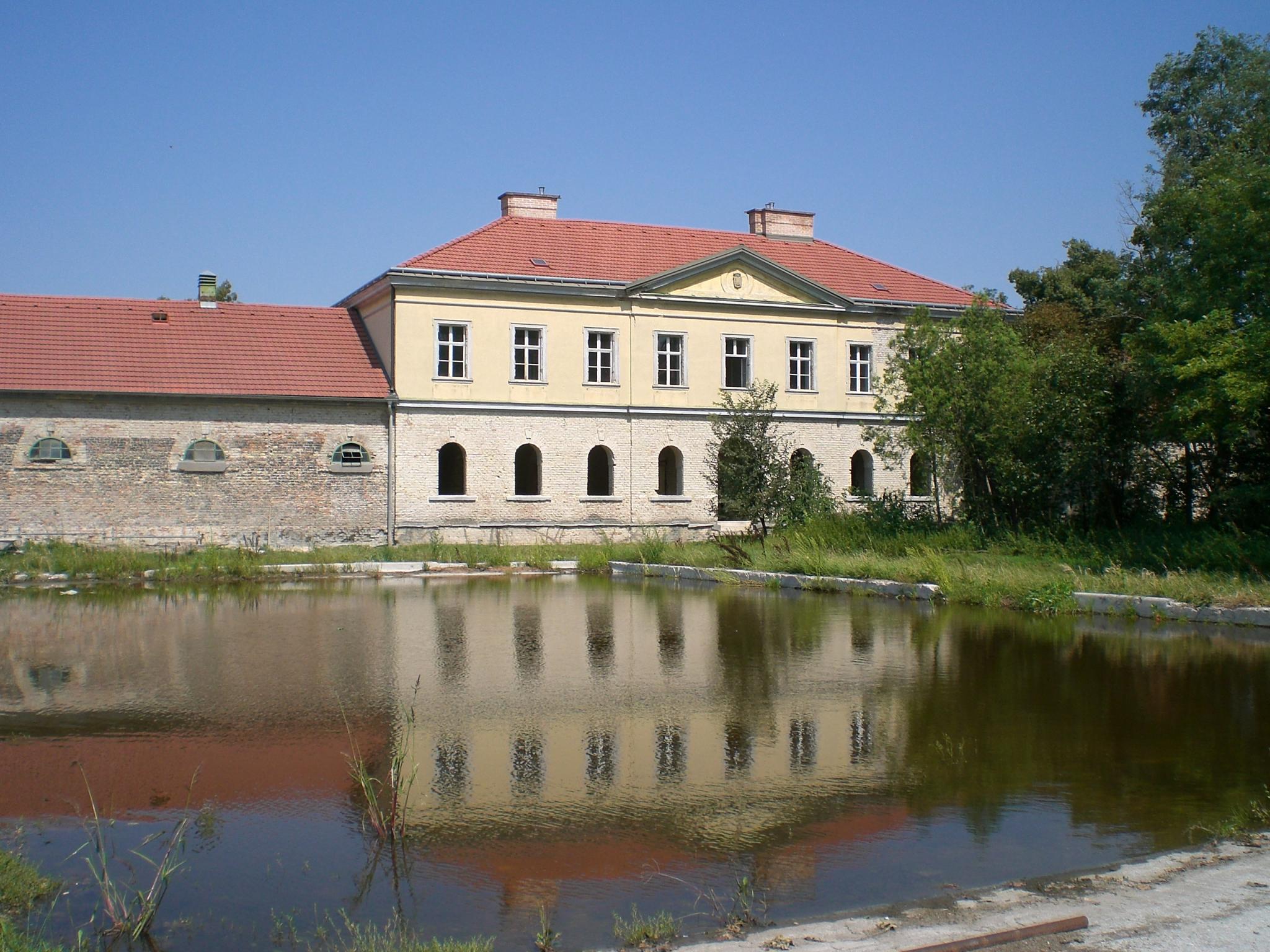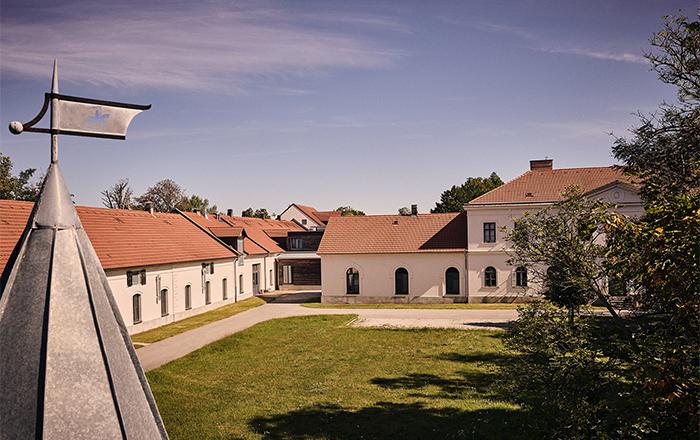
Süßenbrunn Manor with former stables (right) that now serve as the manufactory's workshops.
To the right is the former custodian's house where the factory outlet and the offices are located.
CLOSE PROXIMITY TO OUR CUSTOMERS: VIENNA AS THE SHOE PRODUCTION CENTRE
The production site of Süßenbrunn in Vienna holds vital importance for Ludwig Reiter for several reasons.
We offer high quality products and service, and therefore require being in the vicinity. The production of Ludwig Reiter shoes should be authentic and credible, provable and verifiable and also be experienced at first-hand.
To a large extent our customer-orientated and differentiated product development is based on close contact with customers, which would not be possible if the production plant was located far away.
The close proximity to our clients enables us greater flexibility and quick response: the ability to adapt an end product to a customer’s individual requirements custom-made, small series, short term production process, new designs and changes are a lot easier to manage with the proximity to Vienna.
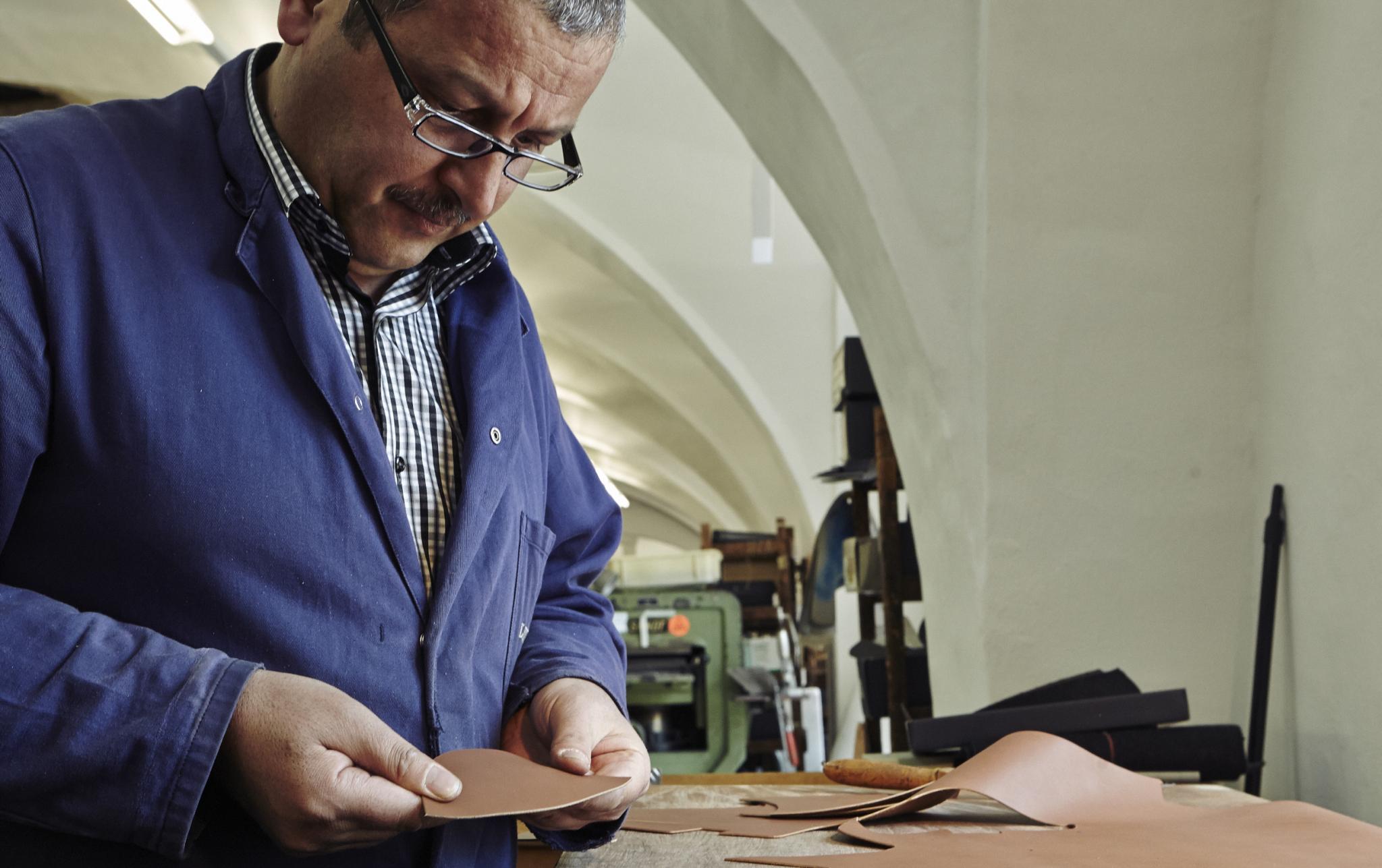
Kadir is a pattern cutter and has made shoes for Ludwig Reiter since over 30 years.
THE HUMAN FACTOR
While nearly all shoe manufacturers produce shoes in non-European cheap labor countries, Ludwig Reiter provides employees with a high level of labor and technical standards.
The overall job satisfaction at Ludwig Reiter is very high. The majority have been employees for many years and therefore the accumulated 'know-how' is great and preserved.
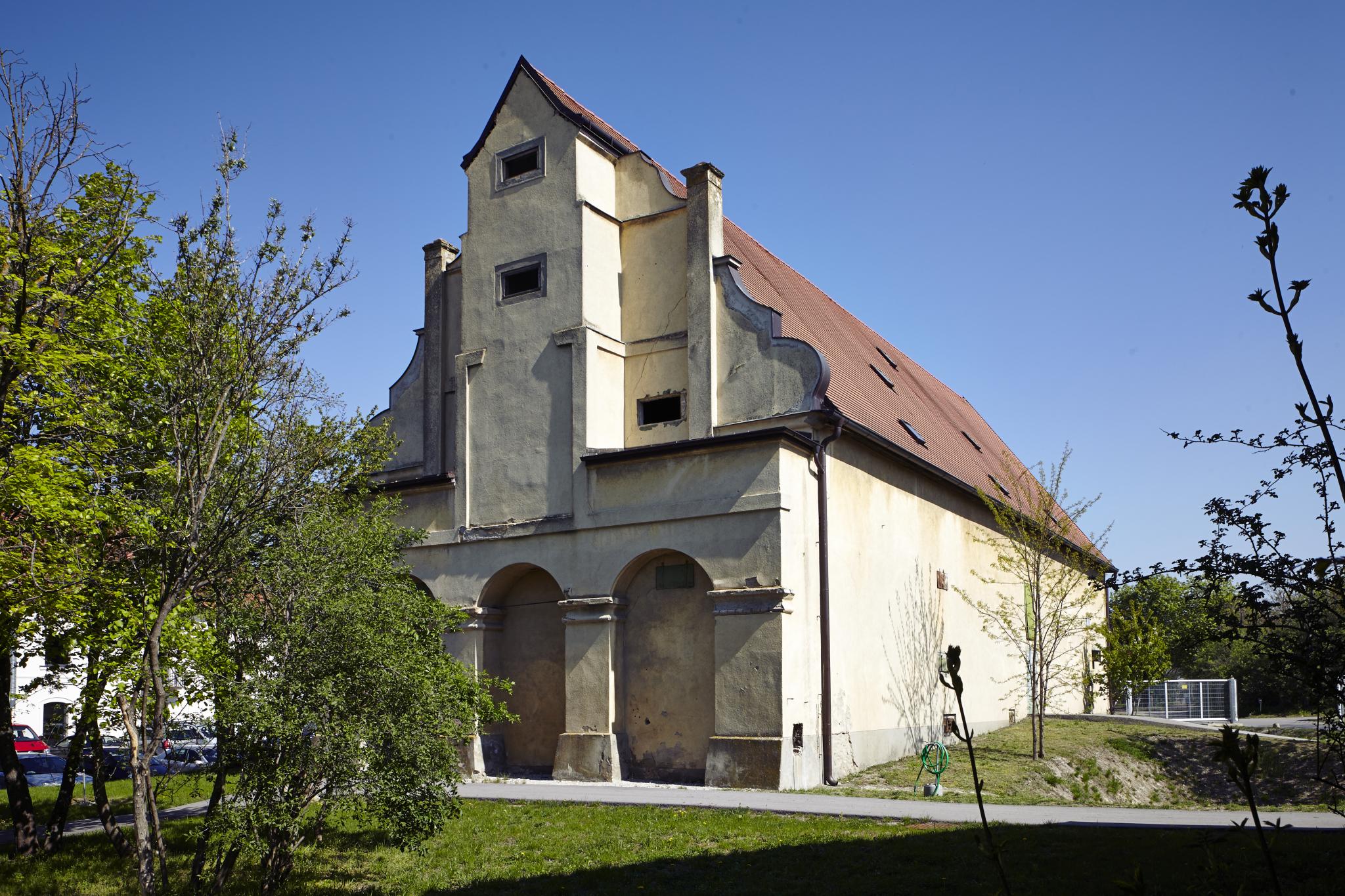
The former granary now serves as storage for materials.
PRESERVING THE FUTURE OF TRADITION WITH TIMELESS ARCHITECTURE
Süßenbrunn Manor is situated on the outskirts of the most north eastern part of the Vienna. It has kept its village-like character and is mainly surrounded by farmland.
With Süßenbrunn, Ludwig Reiter can realize the ideas attached to the grounds in an ideal manner: to get a historical ensemble of buildings while simultaneously giving it a contemporary function. At the same time, this is the implementation of the leitmotif 'The Future of Tradition' by the means of architecture.
Süßenbrunn Manor is a national heritage site, consisting of the historical Renaissance Manor and several domestic buildings that are spread out over 30.000m2 of parkland.
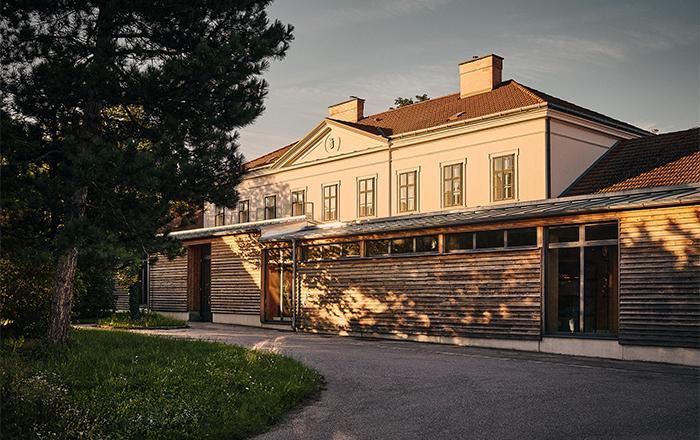
Contemporary extensions in wood connect the former custodian's estate with the manufactory.
NEW SPIRIT IN ANCIENT WALLS
The special charm of Süßenbrunn is still preserved in the entire structure of the Manor. Its character was maintained between 1575 and the start of the 20th century, and is certainly unique inside the Viennese city borders.
Maintaining the atmosphere whilst continuing the production line was a demanding but exciting challenge: the old should be sustained clearly and harmoniously, but linked distinguishably with the new. With this in mind the building has been restored, renovated and completed with a few new additional constructions that have technical as well as practical functions.
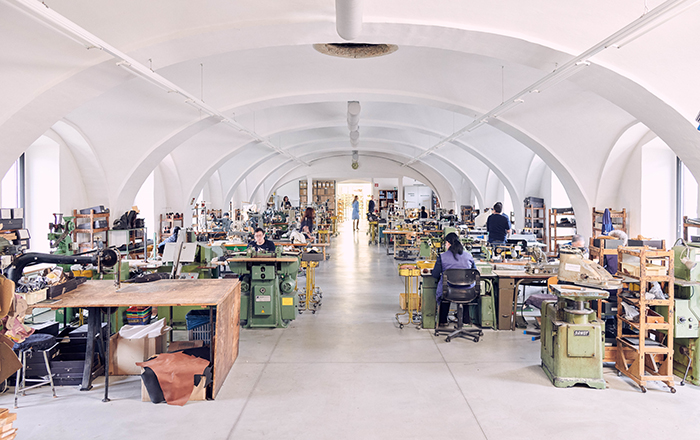
The shoe workshops in the former cattle stables with historic arched ceilings.
FROM COACH HOUSE TO STOCKROOM & STABLE TO WORKSHOP
The former stables of the Manor are now our production workshop. The halls with the historic arches and cast iron pillars were incorporated with the more modern working requirements and extensions, with the consent of the historic preservation authorities.
The house of the former custodians house was transformed into offices, meeting rooms and the factory outlet. The granary was converted into a material and finished goods warehouse.
The coach house, where the wagons and agricultural equipment used to be stored, has now been transformed into the stock room and logistics department.
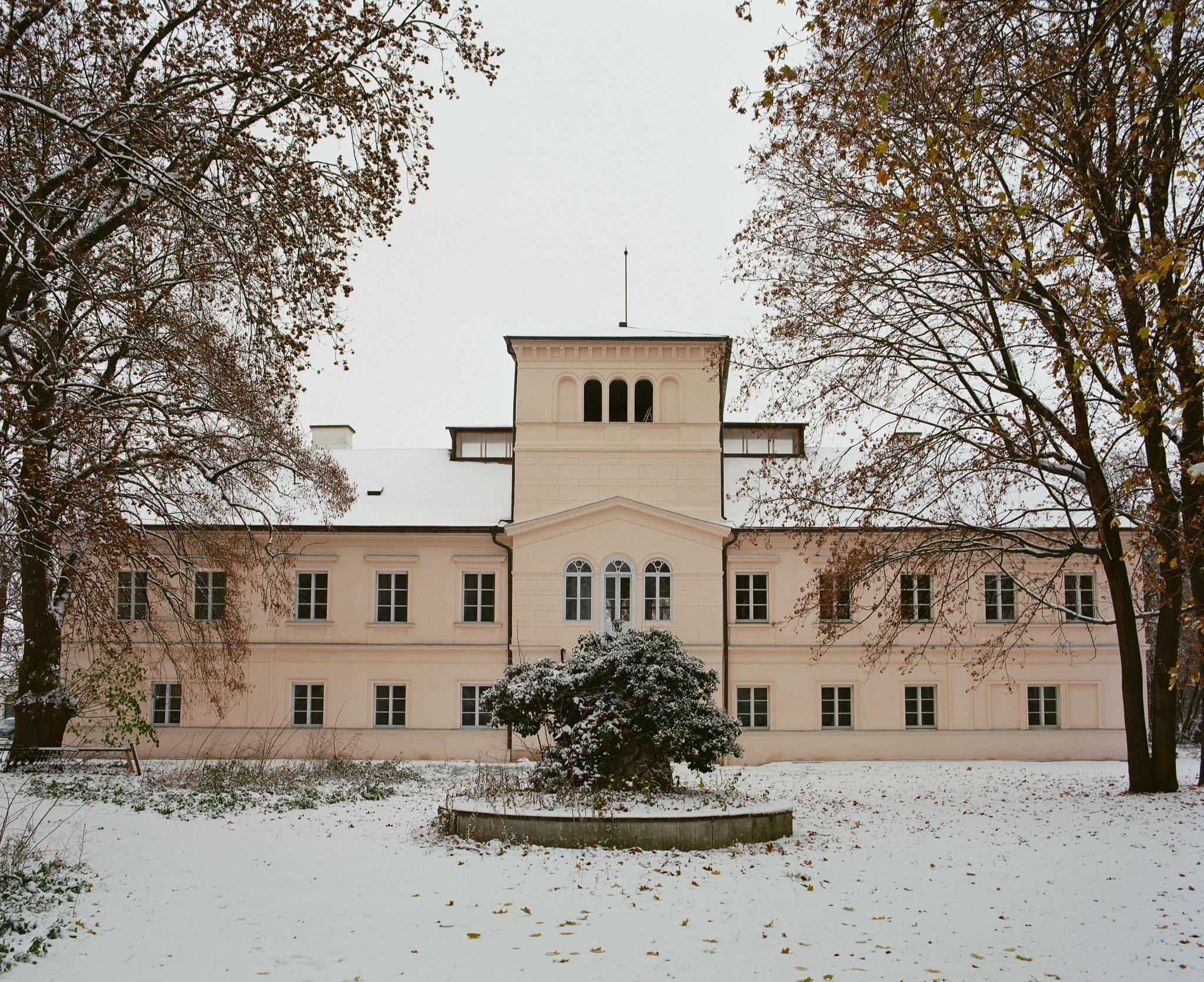
The castle with a newly renovated facade in the winter of 2020.
A GENTLE AWAKENING FOR THIS SLEEPING BEAUTY
Due to the poor structural condition of Süßenbrunn castle and the historical significance of this building it is important to carry out the necessary and very specialized renovations. It is foreseen to take a few additional years to renovate. The original functions of the rooms in the castle will be modified into rooms such as a show room, conference hall, museum and experience shop.
The park will be maintained and incorporated into the infrastructure of the business so that it blends in to the Süßenbrunn environment and village atmosphere.
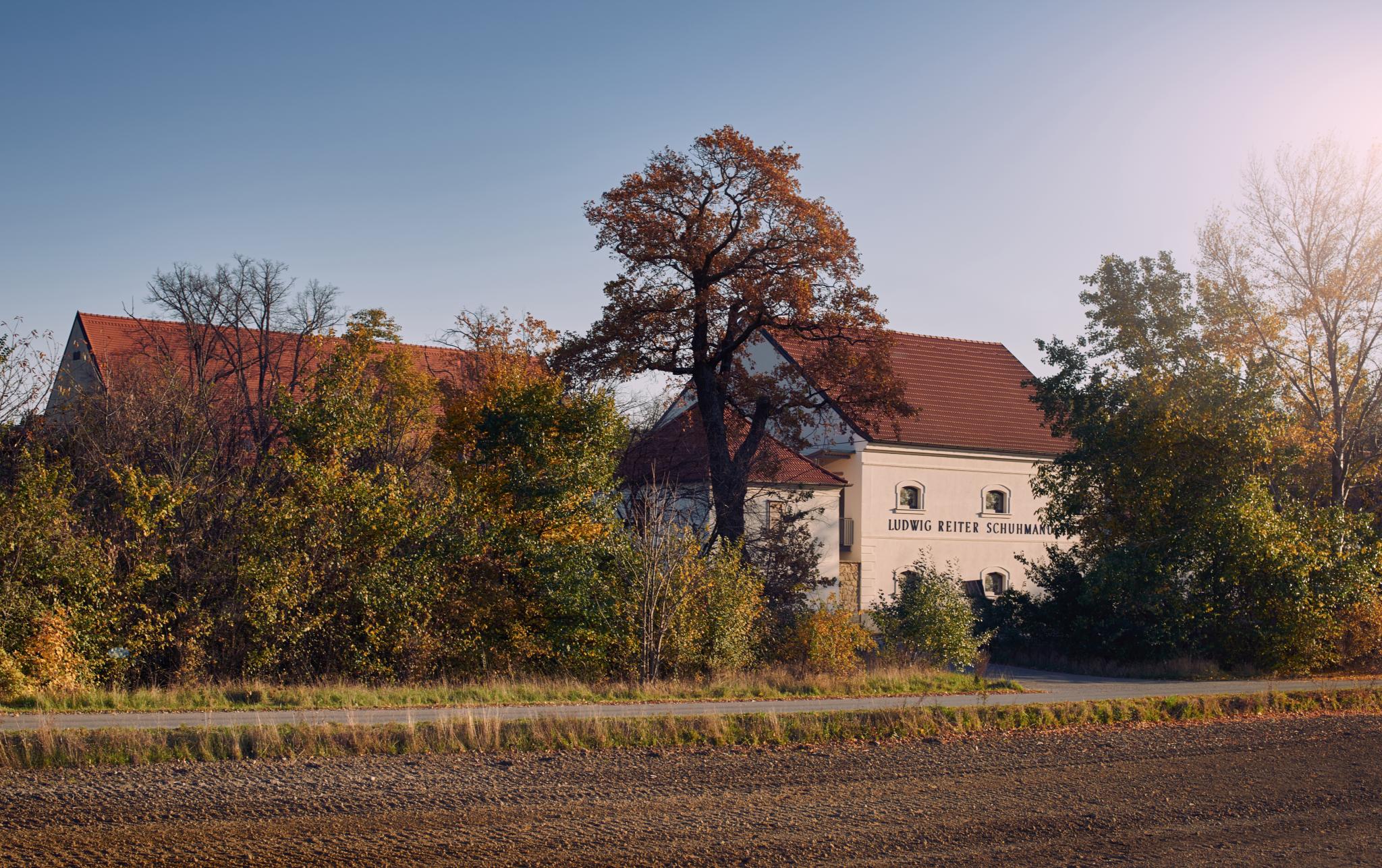
The manufactory looks out from Süßenbrunn over the agricultural fields of the Marchfeld.
ON THE OUTSKIRTS OF VIENNA, IN THE middle of the MARCHFELD
The park's landscape has been largely preserved and incorporated into the site's infrastructure, so that it blends almost seamlessly into the rural and village surroundings of Süßenbrunn and the famous Marchfeld.
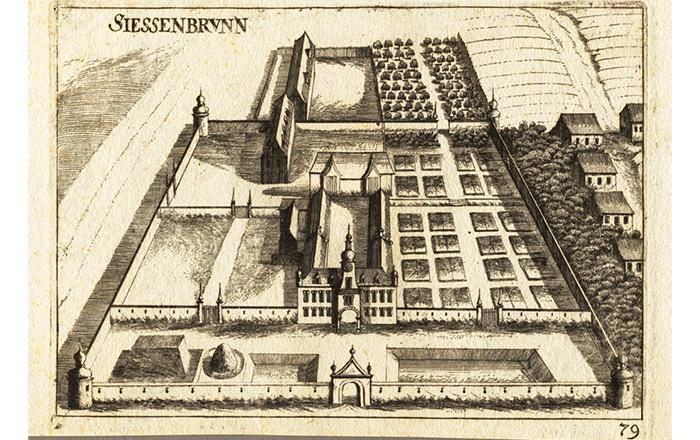
"Siessenbrunn" on a copper plaque by Georg Mathias Vischer, in 1672.
THROUGH THE CENTURIES - THE HISTORY OF SÜSSENBRUNN
In the 12th century, a certain Count Sicco (pron. Sizzo) erected a Medieval Manor in a Village originally known as 'Prunne' situated north-east of Vienna. The current name Süßenbrunn could originate from its quality sweet water fountains or due to the founders name – 'Sizzobrunn'.
After various changes of ownership, including the Lord von Pillichsdorf and Ebersdorf in 1320, the protestant Lord von Landau purchased the property and built it into a presentable Renaissance Manor in 1574.
During the course of the 1620 Counter-Reformation of the Catholic rulers, Süßenbrunn was confiscated. Again ownership changed between noblemen including the Counts von Losenstein, the Prince von Auersperg and the Counts von Falkenberg.
During the first half of the 17th Century the premises suffered under occasional raids by invading Turks.
Shortly before the end of the 30 year war in 1647, Swedish soldiers of the Olmütz Garrison plundered Süßenbrunn.
A copper plaque by Georg Mathias Vischer in 1672 shows the Renaissance Manor 'Siessenbrunn' with the surrounding buildings, gardens and park.
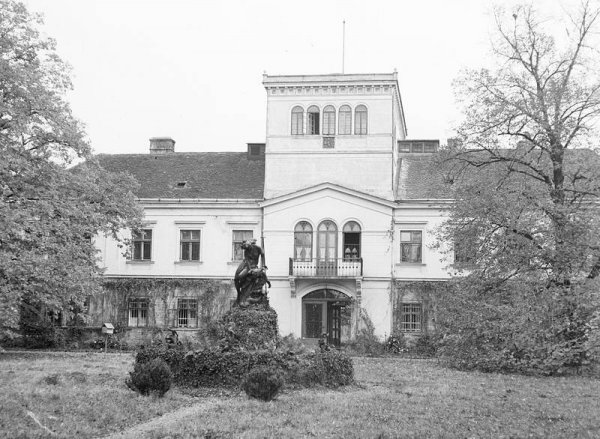
The castle in the 1960ies.
In the Josephine land survey of 1781, 'Süßsenbrun' is depicted as an estate with a manor.
In 1802, the longstanding owners Counts von Grundemann handed the Manor over to the Barons von Walterskirchen.
In 1805, during the Napoleonic war, the French took over the premises of the village and the Süßenbrunn Manor.
In 1816 the Counts von Bartenstein purchased the Manor and formed it according to an early romanticism style.
In 1870, the new owners Counts Dubsky von Trebomyslice erected the caretaker’s lodge in a neoclassical style.
During the beginning of the 20th Century, the new owners of the Manor, the Counts Bösch, expanded the property and added additional farm buildings that included a stable for 100 cows.
The custodian's house was in urgent need of renovations when Ludwig Reiter acquired the premises 2008.
In 1926 the Theresianum Academy Foundation incurred the Süßenbrunn Manor and continued to run the manor-business until the 1970’s. Thereafter, the agricultural land was leased and parts of the manor building were rented out for various purposes. Notably, the structural conditions of the property began to deteriorate.
2008: Ludwig Reiter acquires the property and in 2011 Ludwig Reiter develops Süßenbrunn into the new business premises of the shoe manufacturing plant.

